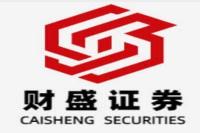LPR Explained: A Comprehensive Guide to Understanding China's Benchmark Interest Rates
Meta Description: Dive deep into the intricacies of the Loan Prime Rate (LPR) in China, exploring its impact on lending rates, economic growth, and your personal finances. Discover how LPR works, its history, and its influence on the Chinese economy.
Are you confused by the Loan Prime Rate (LPR)? It's understandable! This seemingly cryptic term plays a pivotal role in the Chinese financial landscape, impacting everything from home mortgages to business loans. But worry not, dear reader! We're here to break down the LPR in a way that's both informative and easy to understand – no financial jargon required.
Imagine this: the LPR is like the heart of China's lending system. It sets the benchmark for interest rates, influencing the cost of borrowing for both individuals and businesses. Think of it as the "reference point" for everything from your home loan to that loan your small business took out.
This article delves into the who, what, when, where, and why of the LPR. We'll unpack its history, its impact on the economy, and its influence on your financial decisions. Buckle up, because we're about to embark on a journey into the fascinating world of China's key lending rate!
The LPR: An Introduction to China's Benchmark Interest Rate
The Loan Prime Rate (LPR) is a benchmark interest rate used in China for setting loan rates. It's determined by a panel of banks, reflecting the average cost of funding for commercial banks. The process is a bit like a collective decision-making among major banks, where they agree on a fair and representative interest rate for lending.
The LPR is a relatively new kid on the block, replacing the old benchmark rate system in 2019. This shift aimed to make interest rates more market-driven, allowing them to adjust more flexibly to changing market conditions.
Here's a breakdown of the LPR's key features:
- Two Main Types: There are two main types of LPR: 1-year and 5-year.
- Impact on Lending: The 1-year LPR influences short-term loans, while the 5-year LPR is the go-to rate for mortgages and other long-term loans.
- Monthly Announcement: The People's Bank of China (PBOC) announces the LPR on the 20th of every month, unless it falls on a weekend or holiday, in which case it's announced on the next working day.
Understanding the LPR is crucial for anyone involved in the Chinese financial system, whether you're a business owner seeking a loan, an individual looking for a mortgage, or simply someone curious about the intricacies of the Chinese economy.
How LPR Works: A Simplified Explanation
Let's break down the LPR mechanism in plain English. Imagine a group of leading banks sitting around a table, discussing how much they should charge for lending money. They take into account factors like the cost of borrowing money themselves, the health of the economy, and the general market conditions for lending.
Based on this discussion, they arrive at a consensus – the LPR. This agreed-upon rate then becomes the standard for setting loan rates for various types of loans, from short-term business loans to long-term home mortgages.
Now, this doesn't mean that every bank will charge the same interest rate. Each bank might adjust the LPR slightly based on their own risk assessment and operational costs. Think of it like a base price with some flexibility for each bank to adjust it a bit based on their individual circumstances.
The Impact of LPR on the Chinese Economy
The LPR is a powerful tool in China's economic toolkit. It impacts the economy in various ways:
- Stimulating Economic Activity: When the LPR is lowered, it becomes cheaper for businesses and individuals to borrow money. This can encourage investment, spending, and economic growth. Imagine it as a shot in the arm for the economy.
- Managing Inflation: Conversely, raising the LPR can cool down the economy by making borrowing more expensive, which can help curb inflation.
- Guiding Investment: The LPR also plays a role in guiding investment towards certain sectors. For example, if the government wants to promote green energy, it can offer lower LPRs for renewable energy projects.
The LPR and Your Personal Finances
The LPR directly impacts you if you're looking to secure a loan in China. Here's how:
- Mortgage Rates: The 5-year LPR sets the benchmark for mortgage rates. If the LPR goes down, you might get a lower interest rate on your mortgage, saving you money over the long term.
- Business Loans: For businesses seeking loans, the 1-year LPR often acts as a starting point for calculating the cost of borrowing. A lower LPR can make it more affordable to expand your business or invest in new projects.
The History of LPR in China
The LPR has a relatively short history in China. It was introduced in 2019, replacing the old benchmark rate system that was based on the central bank's policy rates. The shift towards a more market-driven LPR aimed to create a more flexible and responsive lending system.
The introduction of the LPR was a significant move in China's economic reforms, aiming to increase the role of market forces in setting interest rates. It's still a relatively new system, but it has already had a substantial impact on the Chinese financial landscape.
Key Factors Influencing LPR Changes
Several factors can influence changes in the LPR:
- Monetary Policy: The PBOC's monetary policy decisions – like cutting or raising interest rates – directly impact the LPR.
- Inflation: Rising inflation often leads to a higher LPR, as banks try to protect their profits from eroding due to inflation.
- Economic Growth: Strong economic growth can lead to a lower LPR, as banks are more willing to lend money at lower rates.
- International Market Conditions: Global economic conditions, such as interest rate changes in major economies, can also influence the LPR.
The Future of LPR in China
The LPR is expected to play an increasingly significant role in China's financial system going forward. It's anticipated to become a more dynamic and responsive indicator of market conditions.
The PBOC is likely to continue refining the LPR mechanism to make it even more market-driven and efficient. The LPR is expected to become even more important in shaping China's economic trajectory in the years to come.
Frequently Asked Questions (FAQs)
1. What does LPR stand for?
LPR stands for Loan Prime Rate, which is a benchmark interest rate for setting loan rates in China.
2. How often is the LPR announced?
The People's Bank of China (PBOC) announces the LPR on the 20th of every month, unless it falls on a weekend or holiday, in which case it's announced on the next working day.
3. What is the difference between the 1-year LPR and the 5-year LPR?
The 1-year LPR is used for setting short-term loans, while the 5-year LPR is used for setting long-term loans, such as mortgages.
4. How does the LPR impact my mortgage?
The 5-year LPR is the benchmark for mortgage rates. If the LPR goes down, you may get a lower interest rate on your mortgage, saving you money over the long term.
5. What factors influence the LPR?
Monetary policy decisions, inflation, economic growth, and international market conditions all play a role in influencing the LPR.
6. How is the LPR calculated?
The LPR is calculated by a panel of banks based on their average cost of funding. They take into account factors like the cost of borrowing money themselves, the health of the economy, and general market conditions for lending.
Conclusion: Navigating the LPR's Impact on Your Life
The LPR is much more than just a financial jargon term. It's a key indicator of the health of the Chinese economy, and it directly impacts the cost of borrowing for individuals and businesses. Now that you have a deeper understanding of the LPR, you can make more informed financial decisions in China.
As you delve deeper into the world of finance, remember that the LPR is an ever-evolving element of the Chinese economy. Staying informed and understanding its fluctuations will empower you to make smarter choices about your personal and business finances.
Remember, financial literacy is a journey, not a destination. Keep exploring, keep learning, and keep making the most of the Chinese financial landscape!



